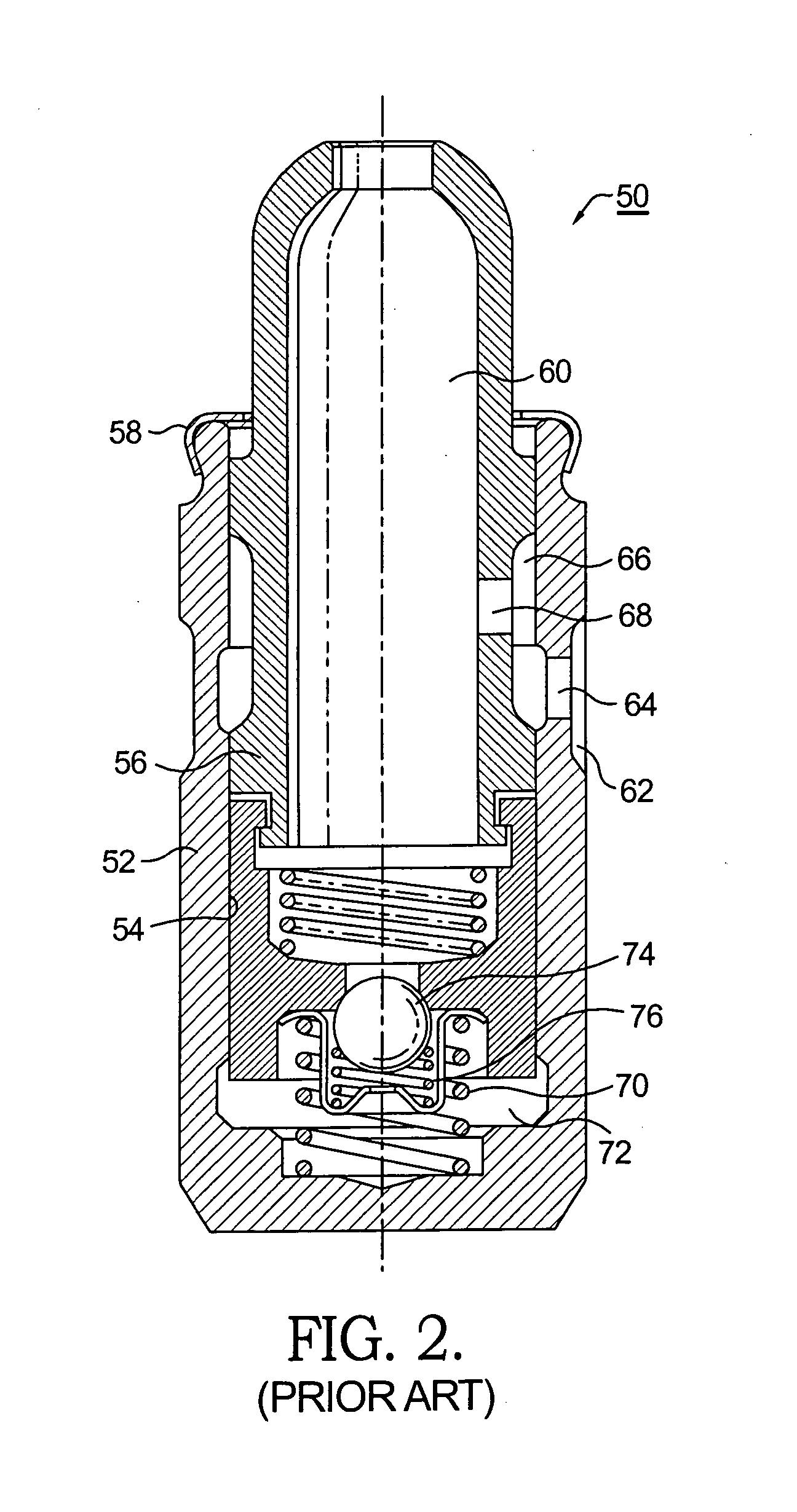Valve lash adjuster having electro-hydraulic lost-motion capability
a technology of electrohydraulic loss and valve lash, which is applied in the direction of engines, mechanical equipment, machines/engines, etc., can solve the problems of inability to predict or control the ignition of the inability to easily apply camshaft phasers to si engines, and the inability to achieve a very high degree of certainty, so as to reduce the required strength and size of solenoid, the effect of small diameter passages and cleaner operation
- Summary
- Abstract
- Description
- Claims
- Application Information
AI Technical Summary
Benefits of technology
Problems solved by technology
Method used
Image
Examples
embodiment 300
[0054] In the prior art, a comparable Type 3 rocker arm is an inflexible unit wherein rotary motion of the cam is translated faithfully into reciprocal motion of the valve stem. Prior art lash adjustment typically is provided by either a screw head (not shown) on valve stem 94 or a hydraulic valve lifter (HVL) assembly (not shown) disposed between arm 320 and valve stem 94. In HLA embodiment 300, rocker arm assembly 314 is provided as first and second arms 320, 322 independently and rotatably mounted on shaft 316. First arm 320 is adapted to engage valve stem 94.
[0055] A well 380 is provided in second arm 322. HLA 300 is disposed in well 380 and is provided with hydraulic fluid, for example, engine oil, via an axial gallery 324 in shaft 316 and a radial passage 325 extending to a connector drilling 326 in arm 322 that communicates with HLA 300. As shown in the exemplary assembly in FIG. 6, HLA 300 is substantially identical in arrangement with HLA 50 shown in FIG. 2, and those compo...
embodiment 400
[0058] In DHLA embodiment 400, rocker arm assembly 414 is provided as first and second arms 420, 422 independently and rotatably mounted on shaft 416. First arm 420 is adapted to engage valve stem 94 as described further below, and second arm 422 is supportive of cam follower roller 417. A well 480 in second arm 422 is analogous to well 380 in FIG. 6. DHLA 300 is disposed in well 480 and is provided with hydraulic fluid, preferably in the form of diesel fuel oil, via an axial gallery 424 in shaft 416 and a radial passage 425 extending to a connector drilling 426 in arm 422 that communicates with DHLA 400. As shown in the exemplary assembly in FIG. 6a, DHLA 400 is substantially identical in arrangement and function with DHLA 200 shown in FIG. 5, and those components need not be repeated here save to note that the overall size of DHLA 400 may be significantly smaller than DHLA 200.
[0059] First arm 420 is provided with a buttress 428 having a wear surface 430 for receiving the spherica...
first embodiment
[0072] The details of lost-motion control valve 638, armature 652 and solenoid stator assembly 662 are identical to valve, armature and stator assembly 138, 152 and 162, as described in the first embodiment, and need not be described again.
[0073] In operation, in valve-activating mode, as DHLA 600 expands like a conventional HLA to provide a pivot point on which rocker arm assembly 614 pivots to cause the engine valve to open, all mechanical lash in valve train 678 between camshaft pushrod 603 and valve stem 94 is eliminated. In operation in valve-deactivating lost-motion mode of DHLA 600, control valve 638 is opened by energizing of solenoid assembly 662, allowing collapse of piston 616 into body 608 in lost motion in response to raising of pushrod 604 by the camshaft. Valve stem 94 is not actuated and the associated engine valve is not opened.
PUM
 Login to View More
Login to View More Abstract
Description
Claims
Application Information
 Login to View More
Login to View More - R&D
- Intellectual Property
- Life Sciences
- Materials
- Tech Scout
- Unparalleled Data Quality
- Higher Quality Content
- 60% Fewer Hallucinations
Browse by: Latest US Patents, China's latest patents, Technical Efficacy Thesaurus, Application Domain, Technology Topic, Popular Technical Reports.
© 2025 PatSnap. All rights reserved.Legal|Privacy policy|Modern Slavery Act Transparency Statement|Sitemap|About US| Contact US: help@patsnap.com



